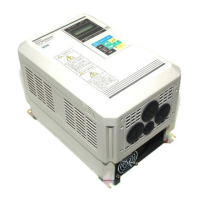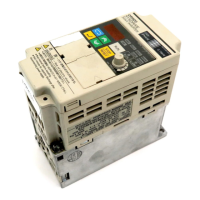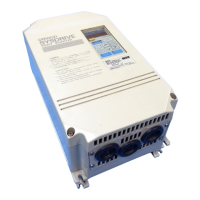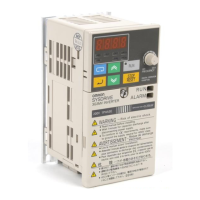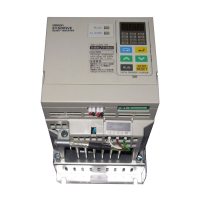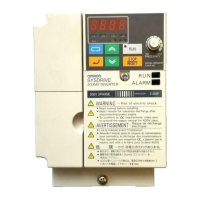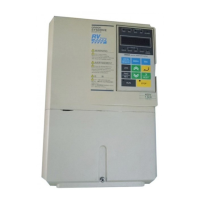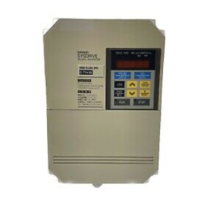6-4
The following diagram shows the relationship between each parameter and the output torque.
L7-01
L7-03
L7-04
L7-02
Output torque
Reverse Forward
Reverse direction
Forward direction
Motor speed
Regenerative
torque
Regenerative
torque
Note When
the torque limit function is engaged the torque control has priority and motor speed control
and compensation will be ignored, so the acceleration/deceleration times might be lengthened
and motor speed might be reduced.
H Limiting Torque with Analog Inputs
The following two analog inputs that can be used to limit torque.
Multi-function analog input terminal 16
Frequency reference (current) terminal 14
Use
either
or both of these inputs as needed with parameters H3-05 and H3-09. These parameters can
-
not be changed during operation.
Parameter Display name Setting Units Default
Valid access levels
number
range setting
V/f
Control
V/f with
PG
Open Loop
Vector
Flux
Vector
H3-05 Terminal 16 Sel 0 to 1F --- 1F Basic or Advanced
H3-09 Terminal 14 Sel 1 to 1F --- 1F Advanced
Settings
The following table shows only those settings related to the torque limit function.
Setting Name
10 Forward Torque Limit
11 Reverse Torque Limit
12 Regenerative Torque Limit
15 Speed Limit (Limits torque in both the forward and reverse directions.)
Set
the analog input terminal’
s signal level,
gain, and bias to match the actual input signal. The factory
default settings for the input terminal’s signal level are as follows:
• Terminal 16: 0 to 10 V (A 10-V input limits the torque to 100% of the motor’s rated torque.)
• Terminal 14: 4 to 20 mA (A 20-mA input limits the torque to 100% of the motor’s rated torque.)
Advanced Operation Chapter
6
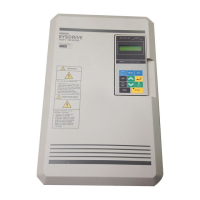
